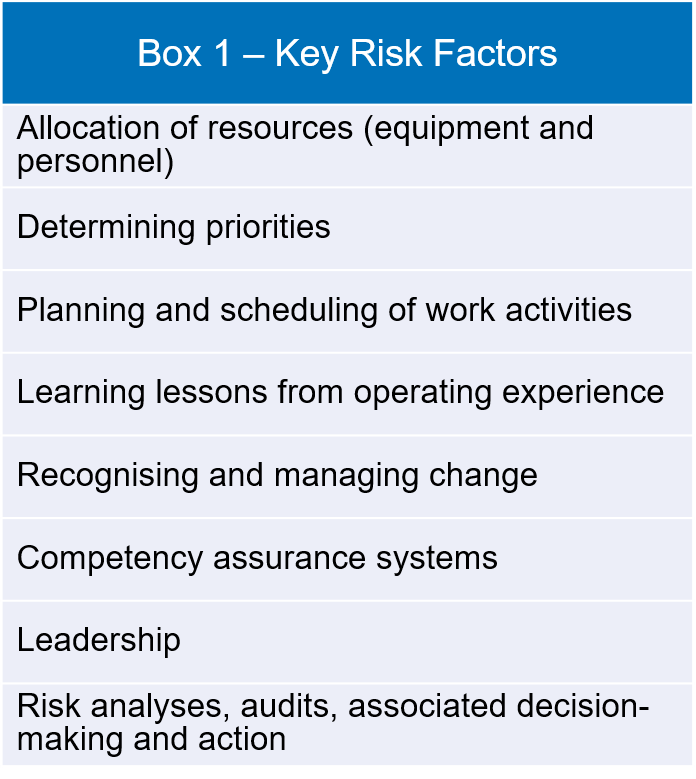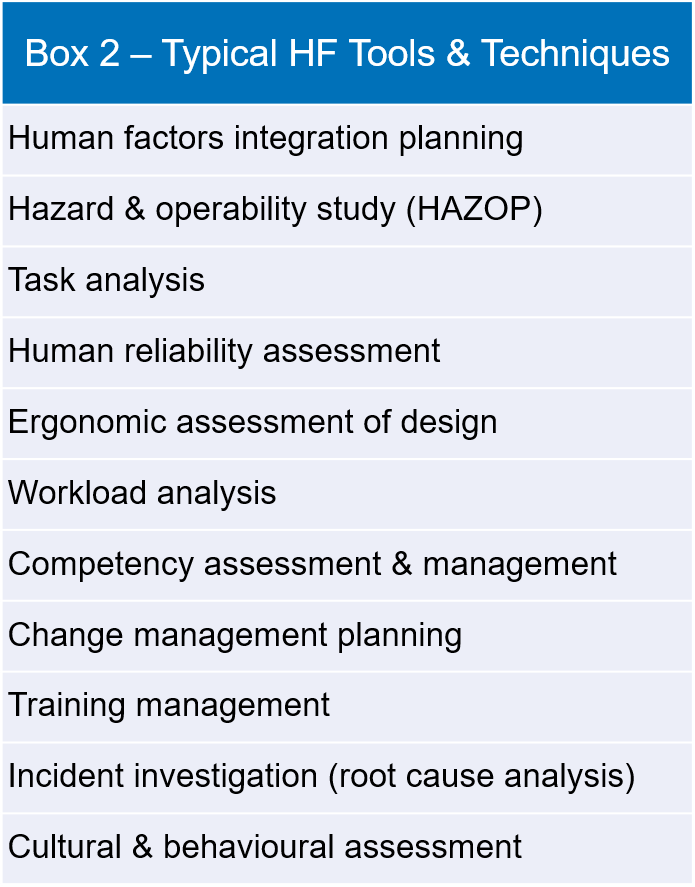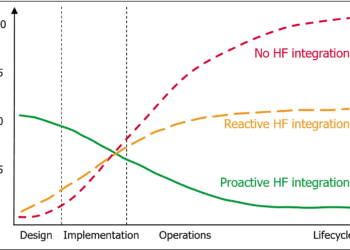Integrating human factors in safety management

TO ERR IS HUMAN
The perfect geometric symmetry of Leonardo Da Vinci’s Vitruvian Man belies man’s innate capacity for error. For example, the UK’s Health and Safety Executive (HSE) estimates that up to 80% of accidents are attributed to human error – factors can include poor design, poor maintenance, attitudes to health and safety, inadequate training or supervision, lack of emergency preparedness, poor work planning and an ineffective organisation.
As the technical complexity of equipment increases, the potential for unsafe events can also increase. However, a study by the Health and Safety Laboratory [Ref 1] found that the adequacy of the safety management system and the health of the safety culture were the major determinants of accident rate, not the level of technological complexity.
HUMAN FACTORS
The human factors discipline applies knowledge of human characteristics to optimise the performance and inherent safety of products, equipment, systems, environments and organisations.
Human factors are often seen as a design and operations issue, and somehow not relevant in a broader organisational context. However, organisational issues are both crucial and often under recognised. HSE research [Ref 2] indicates that although the immediate causes of major incidents frequently involve human error of operators or maintenance personnel, the root cause of these errors were the responsibility of those more senior in the organisation [see also Six Steps for Successful Incident Investigation ].
Viewing the scope of human factors from the perspective of organisational management, rather than just design and operations, has far-reaching implications. The link between organisational and risk performance is illustrated by the key factors which affect risk management of major hazards [see Box 1]. Each factor is clearly influenced by human fallibility.

INTEGRATION IS KEY
For risk assessments to be meaningful and to assure continued safe operation, assumptions on human performance must be identified transparently and then addressed effectively and consistently across the organisation, albeit in a targeted way. Where human factors assessment takes significant credit for human action, whether explicitly or implicitly, this should be backed up by specific provision, typically through:
- Ergonomic design
- Optimised procedures
- Supporting assessment and demonstration (e.g. during commissioning)
- Sufficient competent personnel
- An effective supporting organisation
IMPLEMENTATION
There is a wide array of tools and techniques available for assessing and managing human factors [see Box 2], but the choice and level of detail should vary according to the application, the level of associated risk and the influence of human factors. The aim should be to gain a complete oversight and target areas that offer the largest benefit in terms of risk reduction, while ensuring a clear audit path.

CONCLUSION
The consideration of human factors in design, operations, and maintenance is generally accepted practice. However, its use in shaping and improving an organisation’s approach to safety management in an integrated manner is largely untapped, and yet potentially offers the greatest rewards.
References
1. http://www.hsl.gov.uk/case-studies /accidents.htm
2. Behavioural Safety and Major Accident Hazards: Magic Bullet or Shot in the Dark? Martin Anderson, Health and Safety Executive.
This article first appeared in RISKworld Issue 14.








